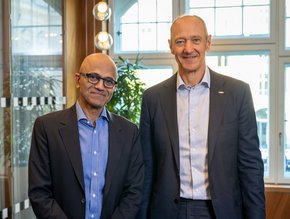Accenture: How to drive cross-functional collaboration

If you want to go fast, go alone. If you want, to go farther, go together, is the message from an Accenture report into how organisations can drive cross-functional collaboration.
According to Accenture, cross-functional collaboration is not an end state, or even a means to an end. “It must be a central organisational imperative for companies in a post-COVID-19, never-normal world, and a strategic focus for executives tasked with sustaining digital transformation efforts.”
When executed effectively, greater collaboration across functional boundaries can not only reduce waste and costs, but also earn measurable financial returns, outlines the report, Together Makes Better - How to drive cross-functional collaboration.
Accenture’s Industry X.0 Research study shows established companies struggle with cross-functional collaboration. In a survey 1,500 global senior and C-level executives of industrial companies (conducted prior to the COVID-19 pandemic) 75% say different business functions (R&D, engineering, production, marketing, operations and sales) are competing against each other instead of collaborating on digitisation efforts.
As companies continue to grapple with adoption and implementation of digital technologies, Accenture suggests they may lose sight of cross-functional collaboration. But, according to the report so-called ‘Champions’ recognise it as fundamental to their business.
“We have uncovered a group of companies that have solved the collaboration conundrum - that work across functional lines to innovate, stay relevant, and drive profitable growth,” commented Accenture.
The report asked that with Champions investing over a third of their revenues into digital projects, was their higher revenue growth profitable? “We examined actual EBIT (earnings before interest and tax) numbers and found that Champions enjoyed 27% EBIT growth during the 2017-19 period, while the rest only achieved a 2.1% growth.”
The five key behaviours which set ‘Champions’ apart include:
- Clarify to function leaders “what” the digital transformation means and why everyone should collaborate
- Hold executives accountable for how well they collaborate across the organisation
- Prioritise projects that generate value for the broader organisation and that stimulate collaboration between functions
- Invest in and rapidly scale platforms that empower continuous collaboration and that will solve the problem of island isolation
- Establish clear rules for their Information Technology and Operating Technology, and how the two work together.
According to Accenture, to overcome common collaboration challenges and to harmonise digitisation efforts across functions, companies should also focus on the following five key actions that Champions take.
- Plan the work and work plan
Be specific, prescriptive, and clear about the vision and mission for your digital transformation.
It’s crucial to plan a specific, multi-phase digital transformation strategy and disseminate widely to everyone involved. It’s also imperative to develop an execution plan for seeing through every step of the transformation.
- Find the key people and empower them
Assign ownership and responsibility around cross-functional collaboration.
A total of 82% of Champions have one C-suite executive who drives digital transformation and is responsible for its success in each function. Having the same person increases the chances of success.
- Pick projects that bring people together
Prioritise digital projects that stimulate cross-functional collaboration.
Champions know where and how to allocate capital. They do it by prioritising projects that require cross-functional collaboration, which then get funded and executed across the organisation.
- Make sure solutions speak the same language
Ensure that all your digital solutions and platforms are interoperable.
Champions know how to harmonise different tech platforms in the cloud, ensuring that they work together seamlessly toward mutual outcomes.
- Create rules for the road
Build smart IT-OT governance policies from the get-go.
Cross-functional collaboration works best when teams are equipped with the technology and expertise to gather, deliver and analyse data in ways that unlock the best insights.
For more information on business topics in Europe, Middle East and Africa please take a look at the latest edition of Business Chief EMEA.






